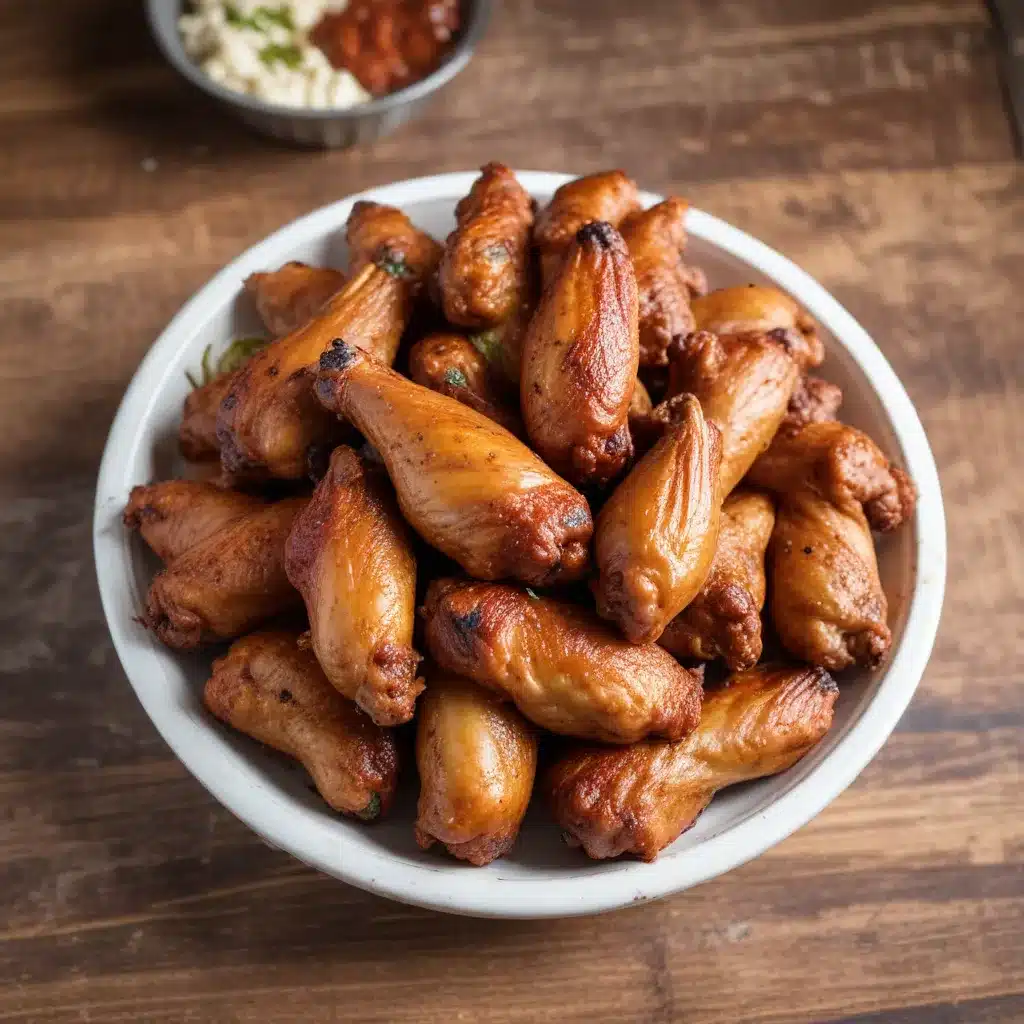
The Allure of Smoked Chicken Wings
As a seasoned pitmaster, I can attest to the allure of perfectly smoked chicken wings. There’s just something about that luscious, fall-off-the-bone texture and the deep, smoky flavor that captivates both casual grillers and hardcore barbecue enthusiasts alike. Whether you’re hosting a backyard gathering, tailgating with friends, or looking to impress at the next barbecue competition, mastering the art of smoked chicken wings is a must-have skill in every pitmaster’s arsenal.
In my years of experience tending to the flames and coaxing out the best possible flavors from my smoker, I’ve learned a thing or two about the intricacies involved in crafting truly remarkable smoked chicken wings. From the initial seasoning to the careful control of temperature and smoke, each step in the process plays a crucial role in elevating these humble poultry appendages into the realm of barbecue perfection.
So, let’s dive in and explore the secrets to creating the most mouthwatering, finger-licking smoked chicken wings that will have your guests clamoring for more.
The Importance of Proper Seasoning
The foundation of any great smoked chicken wing starts with the seasoning. While a simple salt and pepper blend can certainly do the trick, I’ve found that incorporating a few additional spices and herbs can elevate the flavor profile to new heights.
One of my go-to seasoning blends includes a mix of paprika, garlic powder, onion powder, and a touch of cayenne pepper. The paprika lends a rich, smoky undertone, while the garlic and onion powders provide a savory depth of flavor. The cayenne, used judiciously, adds a subtle heat that beautifully complements the other seasonings.
But the real key is to let the seasoned wings rest for at least 30 minutes, or even up to an hour, before placing them in the smoker. This allows the flavors to fully penetrate the meat, ensuring a consistent and delectable taste in every bite.
Controlling the Temperature and Smoke
When it comes to smoking chicken wings, patience and temperature control are paramount. The ideal temperature range for smoking wings is between 225°F and 275°F. This low-and-slow approach ensures that the meat cooks through gently, allowing the connective tissues to break down and the skin to render, resulting in that mouthwatering, fall-off-the-bone texture we all crave.
But temperature control is only half the battle. The type of wood you choose for your smoke can have a profound impact on the final flavor profile. For chicken wings, I tend to favor fruitwoods like apple or cherry, as they impart a subtle sweetness that perfectly complements the savory nature of the meat. Alternatively, you can experiment with a blend of woods, such as oak and hickory, to achieve a more robust, smoky essence.
The key is to introduce the smoke early on and maintain a consistent flow throughout the cooking process. I typically add a few fresh wood chunks or chips every 30 to 45 minutes, ensuring a steady stream of fragrant, wispy smoke that envelops the wings.
Basting and Finishing Touches
As the wings smoke, it’s important to keep a close eye on them and baste them periodically. This not only helps to lock in moisture and prevent the skin from drying out, but it also allows you to experiment with different flavor profiles.
One of my favorite basting techniques involves a simple mixture of melted butter, honey, and the same seasoning blend used in the initial rub. The butter helps to create a glossy, lacquered finish, while the honey adds a touch of sweetness that perfectly balances the savory and smoky elements.
Toward the end of the cooking process, you can also experiment with a quick sear or broil to crisp up the skin, if desired. This extra step adds a delightful textural contrast and can help to caramelize the sugars in the seasoning, resulting in a deeply flavorful, almost addictive crust.
Pairing and Serving Suggestions
No smoked chicken wing experience is complete without the perfect accompaniments. I find that a tangy, creamy ranch or a zesty, vinegar-based barbecue sauce make the perfect dipping companions, allowing your guests to customize their experience to their liking.
For a truly memorable spread, consider pairing your smoked wings with a refreshing coleslaw, creamy mac and cheese, or even some crispy, golden french fries. The contrast of textures and flavors creates a harmonious symphony that will have your guests raving long after the last wing has been devoured.
Perfecting Your Craft
Mastering the art of smoked chicken wings is a continuous journey, filled with experimentation and the pursuit of flavor perfection. As a pitmaster, I’m always eager to try new techniques, experiment with different seasoning blends, and push the boundaries of what’s possible with this humble yet extraordinary protein.
Whether you’re a seasoned backyard barbecue enthusiast or a newcomer to the world of smoked meats, I encourage you to embrace the challenge and embark on your own journey of smoked chicken wing mastery. With a little practice, a keen eye for detail, and a willingness to try new things, you’ll be well on your way to crafting the most delectable, smoky, and irresistible wings that will have your guests clamoring for more.
And don’t forget to visit Creekside BBQ for all your barbecue needs, from high-quality smokers and grills to the latest techniques and recipe inspirations. Happy smoking!

